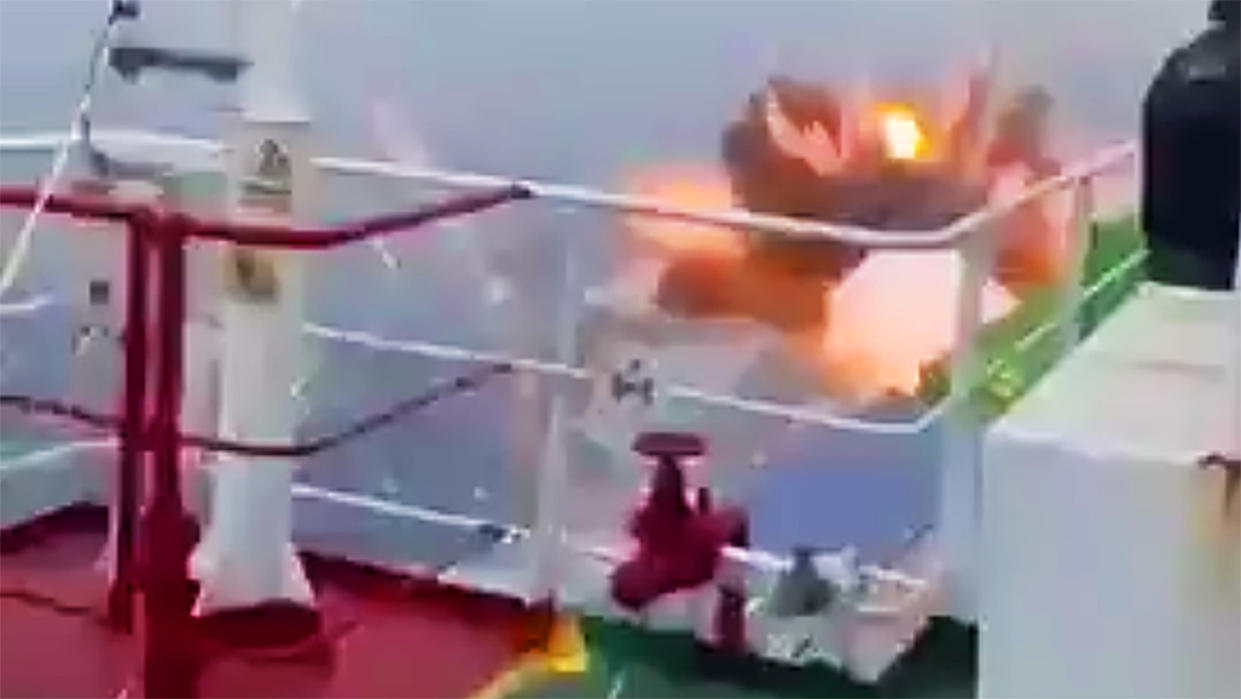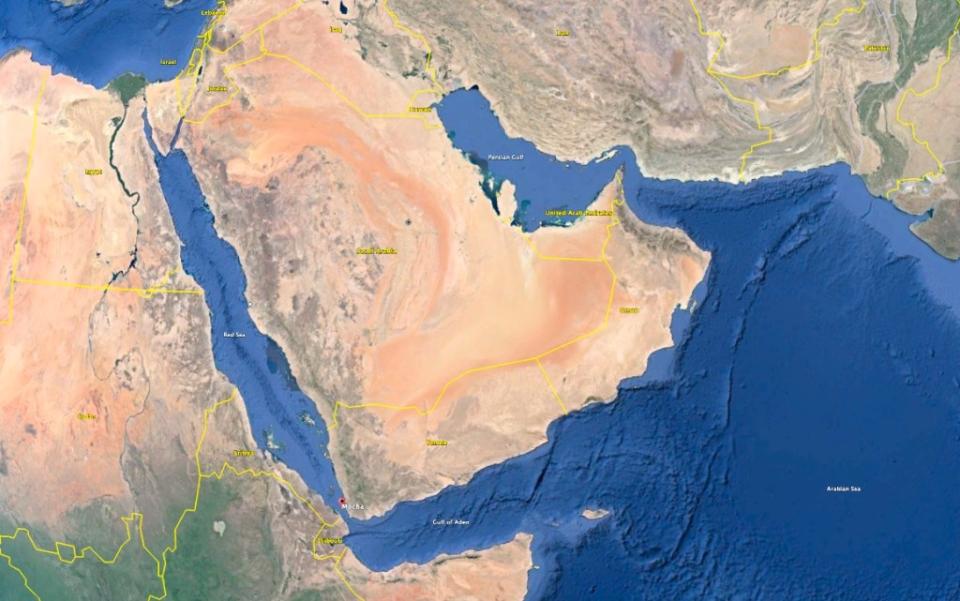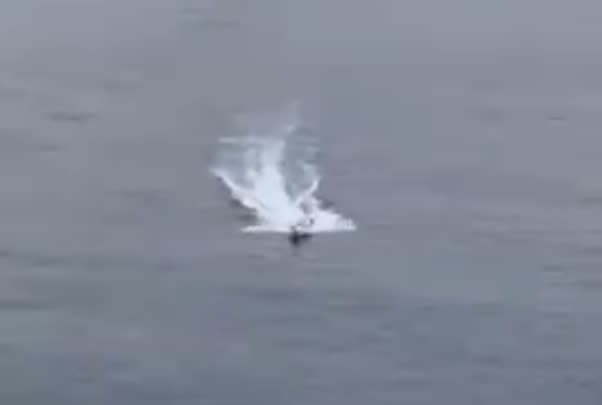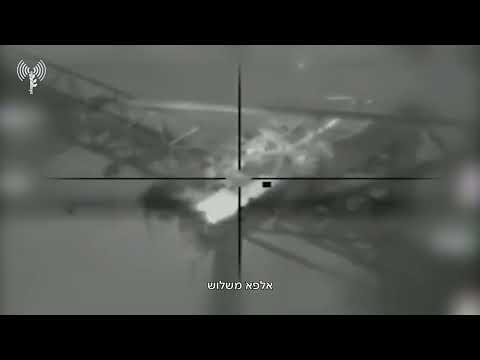Ship Security Team Appears To Detonate Explosive-Laden Houthi Drone Boat With Gunfire

As the Houthi uncrewed surface vessel (USV) steadily approached the Liberian-flagged container ship Pumba in the Red Sea, its security crew fired about two dozen shots in about 14 seconds from their Steyr rifles. Video emerging from that encounter showed after the last of those shots, the USV exploded. The scenario, which took place July 20 in the Red Sea, offers a textbook example of how to defeat these threats, a maritime security expert told us.
“They are well-trained and followed the correct [standard operating procedures] SOPs, the expert told The War Zone. “They were a correctly equipped and armed security team.”

The USV blew up about 30 meters (about 99 feet) off the port side quarter, causing no damage, according to a timeline shared by the expert, who had first-hand knowledge of the attack. However, the “SOPs don’t really cover the distance aspect as you have to take into account the different weapons systems. Warning shots and escalation to lethal shots are important.”
The 138-second video posted on Twitter opens with the security team spotting the Iranian-backed rebel group’s USV several hundred yards off the port side quarter. As it got closer, that team, comprised of men from India, cocked their rifles and then opened fire before the USV got too close. While it appears that one of the shots caused the USV to explode, it is also possible that it was command-detonated or even exploded by accident.
The Houthis attack a container ship using a kamikaze drone boat. pic.twitter.com/GsxCAxLcDk
— Alex Bond (@AlexBondODUA) July 23, 2024
The reaction of the Pumba’s security team stands in stark contrast to how the one aboard the M/V Tutor reacted last month to an approaching Houthi USV. That incident marked the first time one of the Houthi USVs successfully attacked a vessel during the Yemen-based rebel group’s current campaign launched in the wake of the Israel-Hamas war.
In a video that emerged at the time, one of the embarked security team members is seen looking at the USV through binoculars while two of them held their Hecker and Koch G3 rifles pointing inexplicably straight up instead of at the approaching threat. The three watched as it steadily came closer for about 30 seconds. The video cut away before the USV impacted. The video did not show the resulting explosion but instead cut to the security personnel racing to the bridge and the panicked crew inside trying to figure out what to do next.
You can see video of that incident below:
Photos of Houthi kamikaze USV right before it struck Greek-owned cargo ship Tutor.
The ship's guard were totally confused as to what they were observing.
They couldn't even react before it hit the ship. https://t.co/ZwFlWnsFAR pic.twitter.com/8ORRrvZWH6— Clash Report (@clashreport) June 17, 2024
The USV that exploded before it could damage the Pumba was just part of a long and complex attack on the container ship, according to the timeline provided to us. It began about 64 nautical miles northwest of Al Mukha, Yemen shortly before 7 a.m. local time.

An aerial drone exploded between five and 10 meters (about 16.5 to 33 feet) off the starboard side, causing minor damage to containers on deck and starting a small fire that the crew was able to control. An unnamed coalition warship responded and assisted.
About 90 minutes later, the Pumba was approached by three skiffs, two of which were crewed and one uncrewed. This is the incident seen in the video.

What isn’t seen is that a Houthi missile exploded five meters off the starboard side, causing no damage. There were also two UAVs sighted close to the vessel.
Shortly after 8 a.m., a second Houthi missile was launched but exploded before reaching the Pumba. The crew could hear an explosion but were unable to determine exactly how far it was because of poor visibility. They estimated it landed about 30 to 50 meters (about 99 to 164 feet) away.
About three hours later, the Company Security Officer reported that one missile hit the water approximately 100 meters (about 330 feet) from the Pumba’s starboard side. That’s when the crew discovered a hole about six meters (about 20 feet) above the waterline in Pumba’s stern, resulting from one of the multiple attacks but unclear which one. It didn’t cause any issues with the ship’s stability or pollution concerns. There were no injuries and only minor damage. The Pumba then returned to its next port of call.
UKMTO WARNING INCIDENT 103 ATTACK UPDATE 002
The Company Security Officer reported a missile sighted at 0805UTC, splashing in close proximity to the vessel.https://t.co/6mNrG6W5iO#MaritimeSecurity #MarSec pic.twitter.com/ZQPzJx2ICI— United Kingdom Maritime Trade Operations (UKMTO) (@UK_MTO) July 20, 2024
While the Houthis pioneered the operational use of kamikaze USVs years ago in their fight against the Saudis and damaged one of their frigates, Ukraine has taken USV use to a new level. A nation without a fleet of warships of its own, Ukraine effectively pinned down Russia’s Black Sea Feet (BSF) in part due to a series of drone boat attacks against vessels and port infrastructure that began with a massive attack on Sevastopol in October 2022. Ukraine also used USVs to attack the Kerch Bridge, Vladimir Putin’s prized $4 billion span linking Russia with the Crimean peninsula it illegally occupies. Ukrainian USVs have achieved success despite Russian efforts to counter them with improvements to port security and ship-board defenses opening up on them. The ability of Ukrainian drone boats to conduct their attacks shows how hard it is to hit small and swift-moving USVs.
You can see one of those Ukrainian drone boat attacks in the following video:
Ukraine released a video from today’s attack on Sevastopol. It shows a naval drone targeting the Black Sea Fleet’s Admiral Makarov Project 11356 frigate, which Russian sources said was damaged (it replaced the Moskva as the Black Sea Fleet’s flagship). https://t.co/zdAeWUvDrb pic.twitter.com/TNnIu4OIap
— Rob Lee (@RALee85) October 29, 2022
With Ukraine’s success, proliferation of similar capabilities around the globe is now occurring. Meanwhile the Houthis are making improvements on their designs too, and are ramping up their drone boat attacks as part of a multi-domain campaign against shipping in the Red Sea region.
The attack on the Pumba comes as U.S. officials have expressed growing concern about the inability to thwart the Houthis despite an international effort. In response to the ongoing attacks in the Red Sea region, the U.S. Navy and Air Force in October began fighting back against the Houthi. The U.S. and several allies have conducted attacks on Houthi assets in Yemen as well as against their missiles, air and sea drones launched against shipping. There are also two international task forces created to protect shipping, the U.S.-led Operation Prosperity Guardian and the European-led Operation Aspides. Yet the threat persists.
Army Gen. Erik Kurilla, commander of U.S. Central Command, “recently advised in a classified letter to Defense Secretary Lloyd Austin that military operations in the region are ‘failing to deter Houthi attacks on shipping in the Red Sea and that a broader approach is needed,” The Wall Street Journal recently reported, citing U.S. officials.
CENTCOM has been asked to prepare a broader list of potential targets, including specific militants, for possible strikes, the Journal reported.
“Some U.S. officials say, however, that more could have already been done to better protect the commercial shipping, including hitting larger weapons-storage facilities, targeting Houthi leaders and picking targets with a somewhat higher potential casualty count,” the publication stated.
On the same day the Pumba was attacked, Israel carried out a long-distance strike on Houthi facilities in Yemen, hitting fuel storage and other infrastructure the crucial port in the western coastal city of Hudaydah (also written Hodeida) on the Red Sea. The following video, posted by the Israeli Defense Forces, shows that strike in progress.

Israel, retaliating for a deadly Houthi drone attack on Tel Aviv a day earlier, said the target set was selected because it directly facilitates weapons transfers from Iran to the Houthis. Israel’s decision to decimate the fuel reserves in Hudaydah and take out the only two large overhead cranes at the port was clearly focused on sending a deterrent message. The port, however, plays a far greater role than just helping the Houthis. The United Nations has said in the past that approximately 80 percent of all humanitarian aid and the majority of all foreign imports into Yemen pass through this port. You can read more about that here.
The following video shows damage to the port days later.
A look at the Hudeidah port after recent Israeli airstrikes. #Yemen pic.twitter.com/MC8675KtNM
— FJ (@Natsecjeff) July 23, 2024
That strike lowered the bar in responses to Houthi attacks. Whether the U.S. and allies follow suit with more intense attacks than they have carried out so far remains to be seen.
Contact the author: howard@thewarzone.com

